My
List |
Addition Date
|
Target
|
Mission
|
Instrument
|
Size
|

|
2013-09-30 |
|
Kepler
Spitzer Space Telescope
|
Kepler Telescope
Spitzer Space Telescope
|
3840x2160x3 |
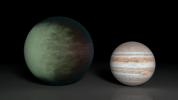
|
-
PIA17445:
-
Partially Cloudy Skies on Kepler-7b (Artist Concept)
Full Resolution:
TIFF
(24.89 MB)
JPEG
(243 kB)
|

|
2013-09-12 |
Sol (our sun)
|
Voyager
|
|
1280x720x3 |
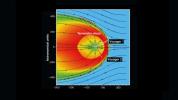
|
-
PIA17463:
-
Heliosphere Traveling Through Interstellar Space
Full Resolution:
TIFF
(2.766 MB)
JPEG
(72.59 kB)
|

|
2013-09-12 |
Sol (our sun)
|
Voyager
|
|
8192x4610x3 |
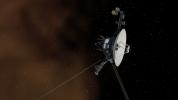
|
-
PIA17462:
-
Voyager 1 Entering Interstellar Space (Artist Concept)
Full Resolution:
TIFF
(113.3 MB)
JPEG
(938.1 kB)
|

|
2013-09-12 |
Sol (our sun)
|
Voyager
|
Oschin Schmidt Telescope
|
891x893x1 |
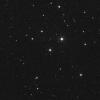
|
-
PIA17461:
-
Heading toward Gliese 445
Full Resolution:
TIFF
(796.7 kB)
JPEG
(105.7 kB)
|

|
2013-09-12 |
Sol (our sun)
|
Voyager
|
|
1280x720x3 |
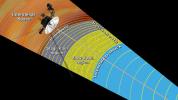
|
-
PIA17460:
-
Moving into Interstellar Space (Artist Concept)
Full Resolution:
TIFF
(2.766 MB)
JPEG
(120.1 kB)
|

|
2013-09-12 |
Sol (our sun)
|
Voyager
|
|
1280x720x3 |
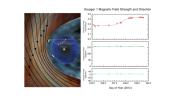
|
-
PIA17442:
-
Mystery of the Interstellar Magnetic Field (Artist's Concept)
Full Resolution:
TIFF
(2.766 MB)
JPEG
(78.79 kB)
|

|
2013-09-12 |
Sol (our sun)
|
Voyager
|
|
1280x720x3 |
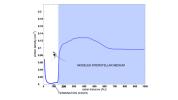
|
-
PIA17441:
-
Observed Change in Density Shows Voyager is in Interstellar Space
Full Resolution:
TIFF
(2.766 MB)
JPEG
(44.37 kB)
|

|
2013-09-12 |
Sol (our sun)
|
Voyager
|
|
1280x720x3 |
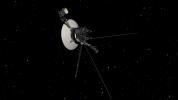
|
-
PIA17049:
-
Voyager in Space (Artist Concept)
Full Resolution:
TIFF
(2.766 MB)
JPEG
(35.7 kB)
|

|
2013-09-12 |
Sol (our sun)
|
Voyager
|
|
1280x720x3 |
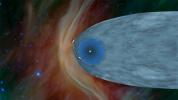
|
-
PIA17048:
-
One Voyager Out, One Voyager In (Artist Concept)
Full Resolution:
TIFF
(2.766 MB)
JPEG
(65.1 kB)
|

|
2013-09-12 |
Sol (our sun)
|
Voyager
|
Very Long Baseline Array
|
512x512x3 |
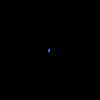
|
-
PIA17047:
-
Voyager Signal Spotted By Earth Radio Telescopes
Full Resolution:
TIFF
(264.2 kB)
JPEG
(4.896 kB)
|

|
2013-09-12 |
Sol (our sun)
|
Voyager
|
|
5432x3025x3 |
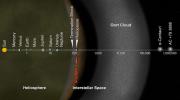
|
-
PIA17046:
-
Voyager Goes Interstellar (Artist Concept)
Full Resolution:
TIFF
(49.32 MB)
JPEG
(3.534 MB)
|

|
2013-09-12 |
Sol (our sun)
|
Voyager
|
Plasma Wave Instrument
|
1280x720x3 |
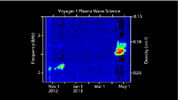
|
-
PIA17045:
-
Voyager Captures Sounds of Interstellar Space

Full Resolution:
TIFF
(2.766 MB)
JPEG
(56.6 kB)
|

|
2013-09-05 |
|
Spitzer Space Telescope
|
Spitzer Space Telescope
|
3200x1800x3 |
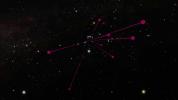
|
-
PIA17259:
-
Brown Dwarf Backyardigans
Full Resolution:
TIFF
(17.29 MB)
JPEG
(245.3 kB)
|

|
2013-09-05 |
|
Spitzer Space Telescope
|
|
3840x2160x3 |
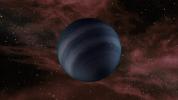
|
-
PIA17258:
-
Free-floating Failed Star (Artist Concept)
Full Resolution:
TIFF
(24.89 MB)
JPEG
(845.6 kB)
|

|
2013-09-05 |
|
NuSTAR
|
NuSTAR
|
3200x1800x3 |
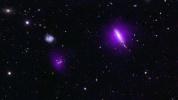
|
-
PIA17440:
-
Black Holes Shine for NuSTAR
Full Resolution:
TIFF
(17.29 MB)
JPEG
(718.2 kB)
|

|
2013-08-23 |
|
Spitzer Space Telescope
|
IRAC
|
3200x2700x3 |
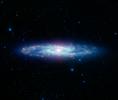
|
-
PIA17256:
-
The Barred Sculptor Galaxy
Full Resolution:
TIFF
(25.93 MB)
JPEG
(436.8 kB)
|

|
2013-08-23 |
|
Spitzer Space Telescope
|
IRAC
|
6400x6400x3 |
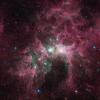
|
-
PIA17257:
-
The Tortured Clouds of Eta Carinae
Full Resolution:
TIFF
(122.9 MB)
JPEG
(5.541 MB)
|

|
2013-08-01 |
|
Spitzer Space Telescope
Wide-field Infrared Survey Explorer (WISE)
|
IRAC
|
2400x1200x3 |
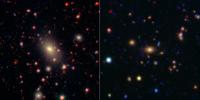
|
-
PIA17253:
-
Monster in the Middle: Brightest Cluster Galaxy
Full Resolution:
TIFF
(8.643 MB)
JPEG
(226 kB)
|

|
2013-07-31 |
|
Spitzer Space Telescope
|
|
3840x2160x3 |
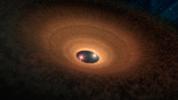
|
-
PIA17252:
-
Dusty Hula Hoop Rings 'Blinking' Stellar Duo (Illustration)
Full Resolution:
TIFF
(24.89 MB)
JPEG
(497.5 kB)
|

|
2013-07-17 |
|
Kepler
|
|
4268x2400x3 |
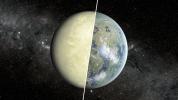
|
-
PIA17250:
-
Toxic Wasteland or Lush Paradise? (Artist Concept)
Full Resolution:
TIFF
(30.75 MB)
JPEG
(1.485 MB)
|

|
2013-06-28 |
|
Galaxy Evolution Explorer (GALEX)
|
GALEX Telescope
|
1650x1650x3 |

|
-
PIA17247:
-
Big Brother to the Milky Way
Full Resolution:
TIFF
(8.171 MB)
JPEG
(473.8 kB)
|

|
2013-06-28 |
|
Galaxy Evolution Explorer (GALEX)
|
GALEX Telescope
|
1500x1500x3 |
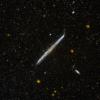
|
-
PIA17246:
-
Galaxy's Pencil-Thin Profile
Full Resolution:
TIFF
(6.753 MB)
JPEG
(377.7 kB)
|

|
2013-06-28 |
|
Galaxy Evolution Explorer (GALEX)
|
GALEX Telescope
|
1500x1500x3 |
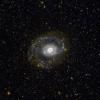
|
-
PIA17245:
-
Ultraviolet Ring of Stars
Full Resolution:
TIFF
(6.753 MB)
JPEG
(390.5 kB)
|

|
2013-06-27 |
Sol (our sun)
|
Voyager
|
|
1280x730x3 |
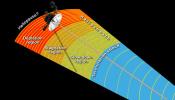
|
-
PIA17034:
-
Transitional Regions at the Heliosphere's Outer Limits
Full Resolution:
TIFF
(2.804 MB)
JPEG
(110 kB)
|

|
2013-06-27 |
Sol (our sun)
|
Voyager
|
|
1385x1103x3 |
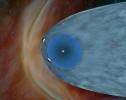
|
-
PIA17033:
-
Voyagers in the Heliosheath (Cropped)
Full Resolution:
TIFF
(4.585 MB)
JPEG
(80.83 kB)
|

|
2013-06-11 |
|
Herschel Space Observatory
|
|
4000x2250x3 |
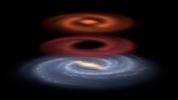
|
-
PIA17243:
-
Mapping Invisible Pools of Gas in Our Galaxy (Illustration)
Full Resolution:
TIFF
(27.01 MB)
JPEG
(379.7 kB)
|

|
2013-06-11 |
|
NuSTAR
|
NuSTAR
|
6620x3724x3 |
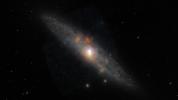
|
-
PIA17244:
-
Sculptor Galaxy Shines with X-rays
Full Resolution:
TIFF
(73.99 MB)
JPEG
(547.1 kB)
|

|
2013-06-05 |
|
Spitzer Space Telescope
|
IRAC
|
6600x6600x3 |
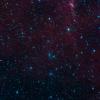
|
-
PIA17241:
-
Galaxies in Hiding
Full Resolution:
TIFF
(130.7 MB)
JPEG
(6.917 MB)
|

|
2013-06-05 |
|
Spitzer Space Telescope
Wide-field Infrared Survey Explorer (WISE)
|
IRAC
WISE Telescope
|
9000x7000x3 |
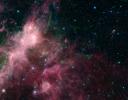
|
-
PIA17019:
-
Life and Death Intermingled
Full Resolution:
TIFF
(189.1 MB)
JPEG
(10.27 MB)
|

|
2013-06-05 |
|
Spitzer Space Telescope
Wide-field Infrared Survey Explorer (WISE)
|
IRAC
WISE Telescope
|
3000x3000x3 |

|
-
PIA17018:
-
Stars Shoot Jets in Cosmic Playground
Full Resolution:
TIFF
(27.01 MB)
JPEG
(1.76 MB)
|

|
2013-06-05 |
|
Spitzer Space Telescope
|
IRAC
|
3300x3300x3 |

|
-
PIA17017:
-
Bubbles Within Bubbles
Full Resolution:
TIFF
(32.68 MB)
JPEG
(1.799 MB)
|

|
2013-05-29 |
|
Wide-field Infrared Survey Explorer (WISE)
|
WISE Telescope
|
4534x2550x3 |
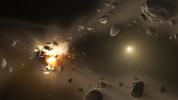
|
-
PIA17016:
-
Asteroid Family's Shattered Past (Artist Concept)
Full Resolution:
TIFF
(34.71 MB)
JPEG
(696.8 kB)
|

|
2013-05-24 |
|
Spitzer Space Telescope
|
IRAC
|
960x960x3 |
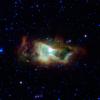
|
-
PIA17015:
-
Infrared Iris
Full Resolution:
TIFF
(2.766 MB)
JPEG
(58.18 kB)
|

|
2013-05-24 |
|
|
|
899x709x3 |
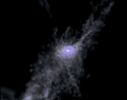
|
-
PIA17014:
-
Cosmic Swirly Straws Feed Galaxy

Full Resolution:
TIFF
(1.913 MB)
JPEG
(25.9 kB)
|

|
2013-05-22 |
|
Herschel Space Observatory
|
|
2400x1500x3 |
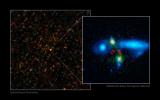
|
-
PIA17013:
-
The Making of a Giant Galaxy
Full Resolution:
TIFF
(10.8 MB)
JPEG
(211.3 kB)
|

|
2013-05-22 |
|
Herschel Space Observatory
|
|
1278x719x3 |
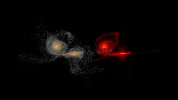
|
-
PIA17012:
-
Mega Galaxy Merger

Full Resolution:
TIFF
(2.758 MB)
JPEG
(43.5 kB)
|

|
2013-05-16 |
|
Spitzer Space Telescope
|
IRAC
|
2820x2820x3 |
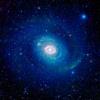
|
-
PIA17011:
-
Galactic Wheels within Wheels
Full Resolution:
TIFF
(23.87 MB)
JPEG
(733.1 kB)
|

|
2013-05-09 |
|
|
Hale Telescope
|
448x438x1 |
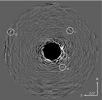
|
-
PIA17010:
-
Planetary Family Portrait
Full Resolution:
TIFF
(196.6 kB)
JPEG
(23.06 kB)
|

|
2013-05-07 |
|
Herschel Space Observatory
|
|
4096x2048x3 |
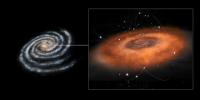
|
-
PIA17009:
-
Hustle and Bustle at Center of Milky Way
Full Resolution:
TIFF
(25.17 MB)
JPEG
(500.7 kB)
|

|
2013-04-23 |
|
Hubble Space Telescope
Wide-field Infrared Survey Explorer (WISE)
|
WISE Telescope
|
4095x2842x3 |
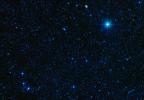
|
-
PIA17005:
-
Galaxy Packs Big Star-Making Punch
Full Resolution:
TIFF
(34.93 MB)
JPEG
(1.316 MB)
|

|
2013-04-19 |
|
Hubble Space Telescope
|
WFC3
|
2704x2826x3 |

|
-
PIA16008:
-
Hubble Sees a Horsehead of a Different Color
Full Resolution:
TIFF
(18.43 MB)
JPEG
(700.1 kB)
|

|
2013-04-18 |
|
Kepler
|
|
4268x2400x3 |
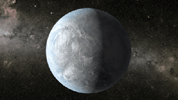
|
-
PIA17004:
-
Kepler-62e (Artist Concept)

Full Resolution:
TIFF
(30.75 MB)
JPEG
(1.774 MB)
|

|
2013-04-18 |
|
Kepler
|
|
4000x2251x3 |

|
-
PIA17003:
-
Super-Venus (Artist Concept)
Full Resolution:
TIFF
(27.02 MB)
JPEG
(525.2 kB)
|

|
2013-04-18 |
|
Kepler
|
|
4268x2400x3 |
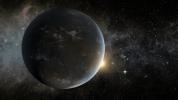
|
-
PIA17002:
-
Morning Star (Artist Concept)
Full Resolution:
TIFF
(30.75 MB)
JPEG
(1.245 MB)
|

|
2013-04-18 |
|
Kepler
|
|
4268x2400x3 |
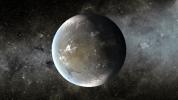
|
-
PIA17001:
-
Kepler-62f, a Small Habitable Zone World (Artist Concept)
Full Resolution:
TIFF
(30.75 MB)
JPEG
(1.432 MB)
|

|
2013-04-18 |
|
Kepler
|
|
3400x2400x3 |
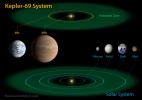
|
-
PIA17000:
-
Kepler-69 and the Solar System
Full Resolution:
TIFF
(24.49 MB)
JPEG
(346.2 kB)
|

|
2013-04-18 |
|
Kepler
|
|
3400x2400x3 |
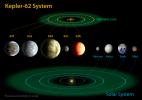
|
-
PIA16889:
-
Kepler-62 and the Solar System
Full Resolution:
TIFF
(24.49 MB)
JPEG
(379 kB)
|

|
2013-04-18 |
|
Kepler
|
|
6112x4680x3 |

|
-
PIA16888:
-
Lining Kepler Habitable Zone Planets Up
Full Resolution:
TIFF
(85.85 MB)
JPEG
(1.055 MB)
|

|
2013-04-17 |
|
Herschel Space Observatory
|
|
1280x1280x3 |
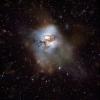
|
-
PIA16887:
-
Artist's Impression of Starburst Galaxy
Full Resolution:
TIFF
(4.917 MB)
JPEG
(211.9 kB)
|

|
2013-04-04 |
|
Kepler
|
|
3000x2400x3 |
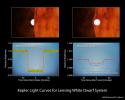
|
-
PIA16886:
-
White Dwarfs: Small and Strong
Full Resolution:
TIFF
(21.61 MB)
JPEG
(404.9 kB)
|

|
2013-04-04 |
|
Kepler
|
|
5120x2880x3 |
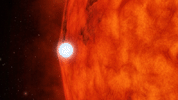
|
-
PIA16885:
-
Dead Star Warps Light of Red Star (Artist's Animation)

Full Resolution:
TIFF
(44.26 MB)
JPEG
(907.2 kB)
|

|
2013-04-03 |
|
Chandra X-ray Observatory
Hubble Space Telescope
Spitzer Space Telescope
|
Chandra X-ray Telescope
IRAC
Visible-Light
|
3600x3600x3 |
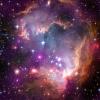
|
-
PIA16884:
-
Taken Under the 'Wing' of the Small Magellanic Cloud
Full Resolution:
TIFF
(38.89 MB)
JPEG
(1.685 MB)
|

|
2013-03-29 |
|
Herschel Space Observatory
|
PACS
SPIRE
|
1500x1434x3 |
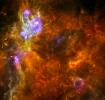
|
-
PIA16883:
-
Churning Out Stars
Full Resolution:
TIFF
(6.456 MB)
JPEG
(182.4 kB)
|

|
2013-03-21 |
|
Planck
|
|
1276x719x3 |
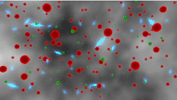
|
-
PIA16882:
-
A Journey of Light Through Space and Time

Full Resolution:
TIFF
(2.754 MB)
JPEG
(81.33 kB)
|

|
2013-03-21 |
|
Planck
|
|
1900x1425x3 |
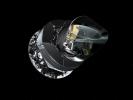
|
-
PIA16881:
-
Sounds of the Ancient Universe
Full Resolution:
TIFF
(8.126 MB)
JPEG
(186.9 kB)
|

|
2013-03-21 |
|
Planck
|
|
640x320x3 |
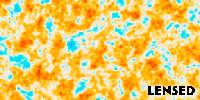
|
-
PIA16880:
-
Through the Universe's Looking Glass

Full Resolution:
TIFF
(206.8 kB)
JPEG
(36.61 kB)
|

|
2013-03-21 |
|
Planck
|
|
3200x1800x3 |
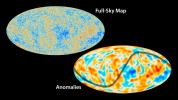
|
-
PIA16877:
-
Peculiar Features in Patterns of Ancient Light
Full Resolution:
TIFF
(17.29 MB)
JPEG
(771.9 kB)
|

|
2013-03-21 |
|
Planck
|
|
5305x2342x3 |
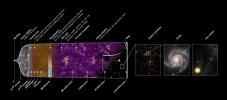
|
-
PIA16876:
-
The Story of Our Universe
Full Resolution:
TIFF
(37.29 MB)
JPEG
(784.4 kB)
|

|
2013-03-21 |
|
Planck
|
|
4000x2200x3 |
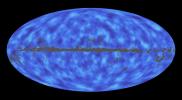
|
-
PIA16875:
-
Map of Matter in the Universe
Full Resolution:
TIFF
(26.41 MB)
JPEG
(330.2 kB)
|

|
2013-03-21 |
|
Planck
|
|
3600x2000x3 |

|
-
PIA16874:
-
The Universe Comes into Sharper Focus
Full Resolution:
TIFF
(21.61 MB)
JPEG
(430.9 kB)
|

|
2013-03-21 |
|
Planck
|
|
3600x1800x3 |
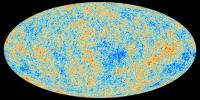
|
-
PIA16873:
-
Best Map Ever of the Universe
Full Resolution:
TIFF
(19.45 MB)
JPEG
(2.28 MB)
|

|
2013-03-19 |
|
Herschel Space Observatory
|
Herschel Telescope
|
3100x2260x3 |
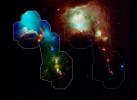
|
-
PIA16839:
-
Infant Stars Peek Out from Dusty Cradles
Full Resolution:
TIFF
(21.03 MB)
JPEG
(339.9 kB)
|

|
2013-03-11 |
|
Wide-field Infrared Survey Explorer (WISE)
|
WISE Telescope
|
2233x2236x3 |
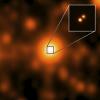
|
-
PIA16872:
-
Two Brown Dwarfs in Our Backyard
Full Resolution:
TIFF
(14.99 MB)
JPEG
(190.2 kB)
|

|
2013-03-05 |
Rosette Nebula
|
Herschel Space Observatory
|
PACS
SPIRE
|
4207x3822x3 |
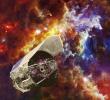
|
-
PIA16871:
-
Herschel's Cool Universe (Artist's Concept)
Full Resolution:
TIFF
(48.27 MB)
JPEG
(1.26 MB)
|

|
2013-02-27 |
|
NuSTAR
XMM-Newton
|
|
3000x2400x3 |
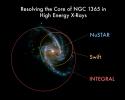
|
-
PIA16699:
-
NuSTAR's Improved View
Full Resolution:
TIFF
(21.61 MB)
JPEG
(367.5 kB)
|

|
2013-02-27 |
|
NuSTAR
XMM-Newton
|
|
3600x2400x3 |
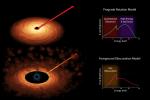
|
-
PIA16697:
-
Two Models of Black Hole Spin (Artist's Concept)
Full Resolution:
TIFF
(25.93 MB)
JPEG
(379.3 kB)
|

|
2013-02-27 |
|
NuSTAR
XMM-Newton
|
|
3600x2400x3 |
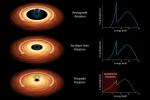
|
-
PIA16696:
-
How to Measure the Spin of a Black Hole (Artist's Concept)
Full Resolution:
TIFF
(25.93 MB)
JPEG
(347.8 kB)
|

|
2013-02-27 |
|
NuSTAR
|
|
4400x2475x3 |
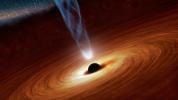
|
-
PIA16695:
-
Black Holes: Monsters in Space (Artist's Concept)
Full Resolution:
TIFF
(32.69 MB)
JPEG
(591.6 kB)
|

|
2013-02-20 |
|
Kepler
|
|
3600x1895x3 |
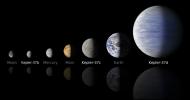
|
-
PIA16694:
-
A Moon-size Line Up (Artist's Concept)
Full Resolution:
TIFF
(20.47 MB)
JPEG
(204.5 kB)
|

|
2013-02-20 |
|
Kepler
|
|
1067x600x3 |
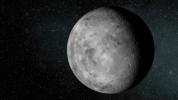
|
-
PIA16693:
-
A Tiny Planet (Artist's Concept)
Full Resolution:
TIFF
(1.922 MB)
JPEG
(101.5 kB)
|

|
2013-02-07 |
|
Hubble Space Telescope
Spitzer Space Telescope
|
|
3000x1800x3 |
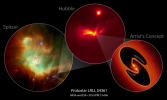
|
-
PIA16690:
-
Protostar LRLL 54361
Full Resolution:
TIFF
(16.21 MB)
JPEG
(290.6 kB)
|

|
2013-02-07 |
|
|
|
934x935x3 |
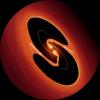
|
-
PIA16689:
-
Artist's Impression of Pulsating Object LRLL 54361
Full Resolution:
TIFF
(2.621 MB)
JPEG
(80 kB)
|

|
2013-02-05 |
Orion
|
Wide-field Infrared Survey Explorer (WISE)
|
WISE Telescope
|
5401x5400x3 |
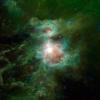
|
-
PIA16684:
-
The Cosmic Hearth
Full Resolution:
TIFF
(87.54 MB)
JPEG
(1.346 MB)
|

|
2013-01-28 |
M31
|
Herschel Space Observatory
|
PACS
SPIRE
|
2711x2920x3 |

|
-
PIA16682:
-
Cool Andromeda
Full Resolution:
TIFF
(23.76 MB)
JPEG
(510 kB)
|

|
2013-01-28 |
M31
|
Herschel Space Observatory
|
SPIRE
|
2800x1575x3 |
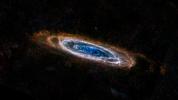
|
-
PIA16681:
-
Andromeda's Colorful Rings
Full Resolution:
TIFF
(13.24 MB)
JPEG
(368 kB)
|

|
2013-01-22 |
|
Herschel Space Observatory
|
PACS
|
625x643x3 |

|
-
PIA16680:
-
Betelgeuse's Enigmatic Environment
Full Resolution:
TIFF
(1.206 MB)
JPEG
(35.67 kB)
|

|
2013-01-10 |
|
Galaxy Evolution Explorer (GALEX)
|
|
2500x1380x3 |
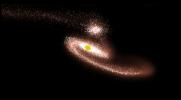
|
-
PIA16614:
-
Simulation of Galactic Collision (Simulation)
Full Resolution:
TIFF
(10.35 MB)
JPEG
(161.1 kB)
|

|
2013-01-10 |
|
ESO Very Large Telescope
Galaxy Evolution Explorer (GALEX)
Spitzer Space Telescope
|
|
5000x2812x3 |
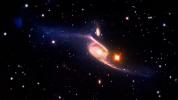
|
-
PIA16613:
-
Dwarf Galaxy Spotted
Full Resolution:
TIFF
(42.2 MB)
JPEG
(752.2 kB)
|

|
2013-01-09 |
|
Herschel Space Observatory
|
PACS
|
826x485x3 |
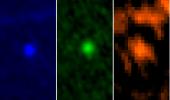
|
-
PIA16675:
-
Herschel's Three-Color View of Asteroid Apophis
Full Resolution:
TIFF
(1.202 MB)
JPEG
(25.73 kB)
|

|
2013-01-08 |
|
Herschel Space Observatory
Spitzer Space Telescope
|
|
4268x2400x3 |
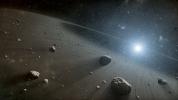
|
-
PIA16610:
-
Rocky Ring of Debris Around Vega (Artist Concept)
Full Resolution:
TIFF
(30.75 MB)
JPEG
(1.011 MB)
|

|
2013-01-08 |
|
Hubble Space Telescope
Spitzer Space Telescope
|
|
4268x2400x3 |
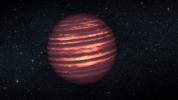
|
-
PIA16609:
-
Forecast for Exotic Weather (Artist Concept)
Full Resolution:
TIFF
(30.75 MB)
JPEG
(803.7 kB)
|

|
2013-01-07 |
Cassiopeia A
|
NuSTAR
|
NuSTAR
|
2200x2200x3 |

|
-
PIA16606:
-
Sizzling Remains of a Dead Star
Full Resolution:
TIFF
(14.53 MB)
JPEG
(408.9 kB)
|

|
2013-01-07 |
|
NuSTAR
|
NuSTAR
|
1700x1700x3 |
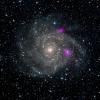
|
-
PIA16605:
-
Blazing Black Holes Spotted in Spiral Beauty
Full Resolution:
TIFF
(8.674 MB)
JPEG
(421.3 kB)
|

|
2012-12-18 |
|
Spitzer Space Telescope
|
IRAC
|
4015x3637x3 |
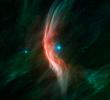
|
-
PIA16604:
-
Massive Star Makes Waves
Full Resolution:
TIFF
(43.82 MB)
JPEG
(1.115 MB)
|

|
2012-12-13 |
|
Chandra X-ray Observatory
Hubble Space Telescope
Spitzer Space Telescope
Very Large Space Telescope (VLT)
|
|
3600x3600x3 |

|
-
PIA15806:
-
NGC 3627: Revealing Hidden Black Holes
Full Resolution:
TIFF
(38.89 MB)
JPEG
(646 kB)
|

|
2012-12-06 |
|
Wide-field Infrared Survey Explorer (WISE)
|
|
3000x2000x3 |

|
-
PIA16601:
-
WISE Finds a Galactic Metropolis
Full Resolution:
TIFF
(18.01 MB)
JPEG
(444.8 kB)
|

|
2012-12-03 |
Sol (our sun)
|
Voyager
|
|
1280x720x3 |

|
-
PIA16486:
-
Voyager 1 Explores the "Magnetic Highway"

Full Resolution:
TIFF
(2.766 MB)
JPEG
(61.38 kB)
|

|
2012-12-03 |
Sol (our sun)
|
Voyager
|
|
1000x973x3 |
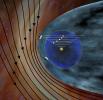
|
-
PIA16485:
-
Solar and Interstellar Magnetic Fields (Artist's Concept)
Full Resolution:
TIFF
(2.92 MB)
JPEG
(98.65 kB)
|

|
2012-12-03 |
Sol (our sun)
|
Voyager
|
|
1772x975x3 |
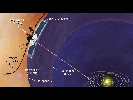
|
-
PIA16483:
-
Plasma Flow Near Voyager 1 (Artist Animation)

Full Resolution:
TIFF
(1.731 MB)
JPEG
(117.8 kB)
|

|
2012-12-03 |
Sol (our sun)
|
Voyager
|
Magnetometer
|
2006x1479x3 |
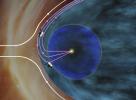
|
-
PIA16482:
-
The Sun's Southern Wind Flows Northward (Artist's Concept)
Full Resolution:
TIFF
(8.904 MB)
JPEG
(151.9 kB)
|

|
2012-11-28 |
|
Herschel Space Observatory
|
Herschel Telescope
|
1000x699x3 |
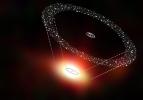
|
-
PIA16467:
-
A Vast Disk of Comets (Artist's Concept)
Full Resolution:
TIFF
(2.098 MB)
JPEG
(45.26 kB)
|

|
2012-11-21 |
|
Planck
|
Planck Space Telescope
|
3564x3571x3 |
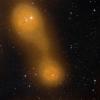
|
-
PIA16466:
-
Bridging Cities of Galaxies
Full Resolution:
TIFF
(38.2 MB)
JPEG
(1.518 MB)
|

|
2012-11-15 |
|
Hubble Space Telescope
|
Advanced Camera for Surveys
WFC3
|
1578x1520x3 |
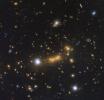
|
-
PIA16465:
-
Astronomers Spot Most Distant Known Galaxy
Full Resolution:
TIFF
(7.198 MB)
JPEG
(305.8 kB)
|

|
2012-11-14 |
|
Herschel Space Observatory
XMM-Newton
|
PACS
SPIRE
XMM-Newton X-ray
|
3234x2248x3 |
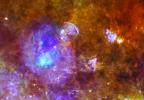
|
-
PIA16464:
-
Life and Death in a Star-Forming Cloud
Full Resolution:
TIFF
(21.82 MB)
JPEG
(446.7 kB)
|

|
2012-11-07 |
|
Chandra X-ray Observatory
Isaac Newton Telescope
Spitzer Space Telescope
|
|
3600x3600x3 |

|
-
PIA16438:
-
A Nearby Stellar Cradle
Full Resolution:
TIFF
(20.2 MB)
JPEG
(1.678 MB)
|

|
2012-11-01 |
|
Spitzer Space Telescope
|
|
2100x2429x3 |

|
-
PIA16212:
-
Scenarios for the Evolution of Asteroid Belts
Full Resolution:
TIFF
(15.31 MB)
JPEG
(616.5 kB)
|

|
2012-10-24 |
|
Spitzer Space Telescope
|
|
3600x2400x3 |

|
-
PIA16216:
-
Spitzer Sees Stray Starlight (Artist's Concept)
Full Resolution:
TIFF
(25.93 MB)
JPEG
(219.2 kB)
|

|
2012-10-24 |
|
Spitzer Space Telescope
|
IRAC
|
2847x1422x3 |
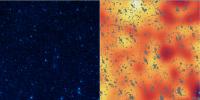
|
-
PIA16215:
-
Unmasking a Hidden Glow
Full Resolution:
TIFF
(12.15 MB)
JPEG
(986.3 kB)
|

|
2012-10-23 |
|
NuSTAR
|
NuSTAR
Spitzer Space Telescope
|
4000x2400x3 |
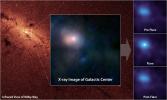
|
-
PIA16214:
-
Pointing X-ray Eyes at our Resident Supermassive Black Hole
Full Resolution:
TIFF
(28.81 MB)
JPEG
(2.077 MB)
|

|
2012-10-23 |
|
NuSTAR
|
NuSTAR
|
3202x2402x3 |
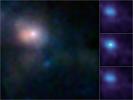
|
-
PIA16213:
-
First Look at Milky Way's Monster in High-Energy X-ray Light
Full Resolution:
TIFF
(23.08 MB)
JPEG
(206.4 kB)
|

 Planetary Data System
Planetary Data System





















































































































